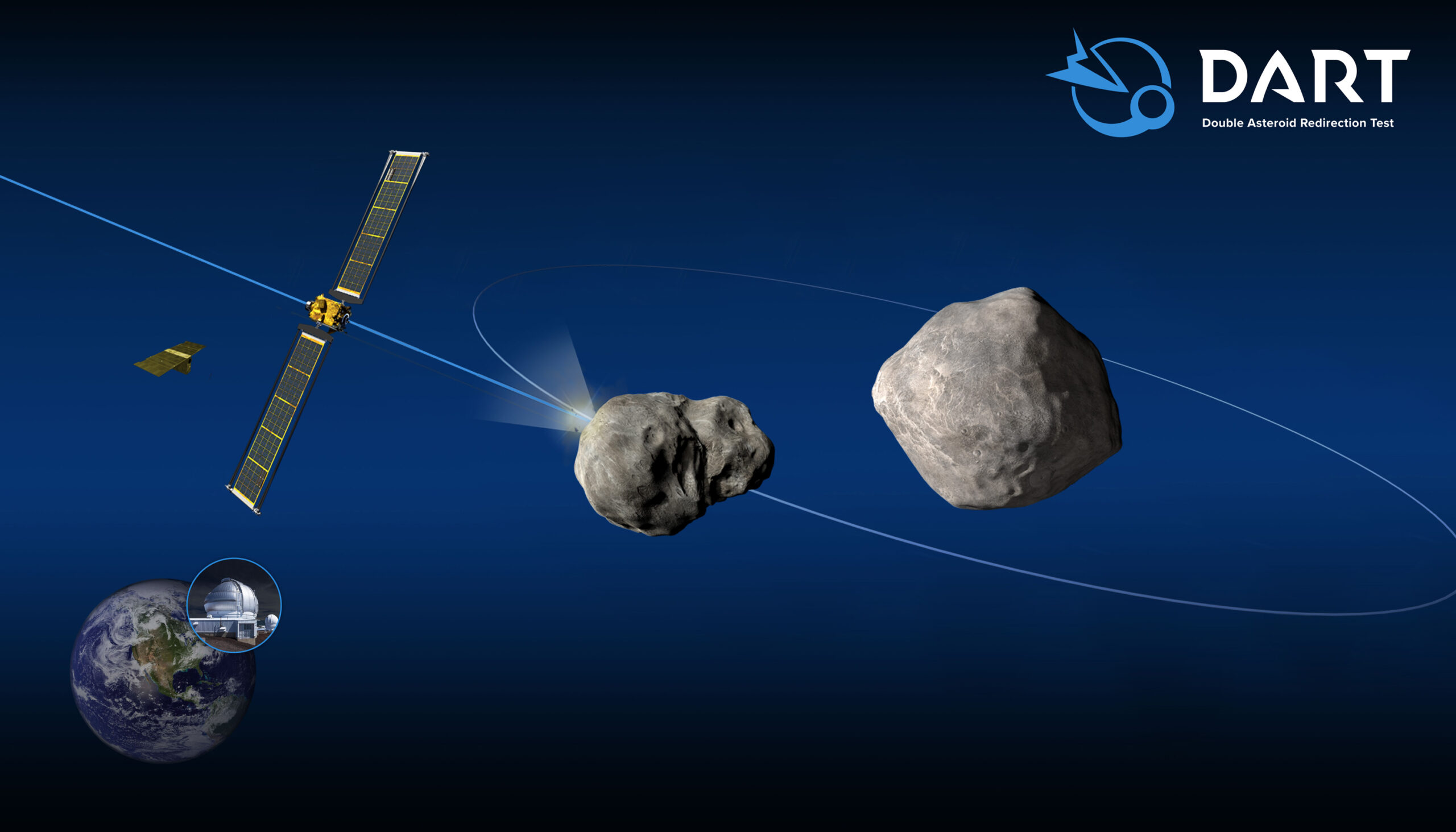NASA’s New Asteroid Redirection Test

Vandenberg Space Force Base California – the spacecraft NASA launched redirected an asteroid using new technology with an aim to save Earth in the future. Using kinetic impact from the spacecraft, NASA’s project spanning from November 24, 2021, to September 26, 2022, will hopefully see more results soon.
Armageddon (1998) was a movie many of our parents watched in theatres. When an asteroid grows increasingly near Earth, NASA decides to send a crew up into space and detonate a bomb on the asteroid’s surface. It was fictionalised, seeing that in reality, there was no threat of an impending asteroid, but the storyline hints at a possible threat in our future. Similarly, in a more recent movie, Don’t Look Up (2021), two budding astronomists set out to convince the world that a comet is dangerously close to Earth. Many more movies focus on the theme of a life-threatening asteroid, as it mimics a very real possibility for our future in which an asteroid will threaten Earth in the next hundred years. However, filmmakers’ progress has been limited to making blockbuster movies and hypothesising a possible asteroidal event. Googling “How to prevent asteroid collision with Earth,” results in the theoretical elucidation of impacting the troublesome rock with a projectile. This is a positive approach but lacks the testing of the conceptual solution. Thus, do not fret because NASA is working on protecting Earth.
As the asteroids are millions of kilometres away, scientists can only see a single point in the sky representing the two ground-based optical telescopes. Instead of directly identifying them, they measure the dips of brightness, which it is brighter when Dimorphous is closer and dimmer when Dimorphous is behind Didymos. More accurately, a pair of radar facilities could distinguish the asteroids as perceptible objects, measuring the orbit time before and after. Before DART made an impact, the orbit time of Dimorphic around Didymos was 11 hours and 55 minutes.
Using telescopes and radar dishes, the investigation team has corroborated that the spacecraft modified Dimorpho’s orbit to be decreased by 32 minutes. Now, the orbit time is 11 hours and 23 minutes. However, to guarantee the redirection of a threatening asteroid heading toward Earth, there are some areas which need to be taken into consideration. For the technology to be successful, understanding the properties and locations of space rocks as well as having enough time to react to the plan is key.
DART was launched in November 2021, recently hitting its target in September 2021, taking about 10 months to reach Dimorphous. However, if the asteroid was closer to us it would take less time but the issue which arises is the limited notice due to its proximity to Earth.
Nancy Chabot, the DART coordinator at Johns Hopkins University Applied Physics Laboratory said that “warming is really key here,” relating to the discussion of an impending asteroid threat. Chabot added that a mission would need to launch years before the asteroid was due to hit Earth in order to guarantee deflection but with more development, rocks bigger than the 160-metres wide Dimorphous could be redirected.
Historically, many human aspirations and predictions have become realised. For example, humankind has consistently perpetuated the aspiration to fly. Currently, we are able to experience aviation through aircraft, such as an airplane or a helicopter. During my youth, I would watch Avatar repeatedly to see the representation of magic transforming oneself into the body of an alien on another planet. Nowadays, astronomers are selecting planets which could possibly sustain life. These instances all exist in our reality, so it is necessary to prepare for a theoretical asteroid heading towards Earth as well. The chances of an asteroid hitting Earth are very slim but exist. For example, one may recall the asteroid which wiped out all of the prehistoric dinosaurs. All three areas will require the expertise of scientists whether those be aeronautical engineers or astronomers. In this sense, science is an important field of study to which we should all pay attention to.
DART is a work in progress, but it is the emblem of the first time humans have ever purposely redirected any celestial bodies. With patience and time, scientists will have the capacity to keep Earth safe.
